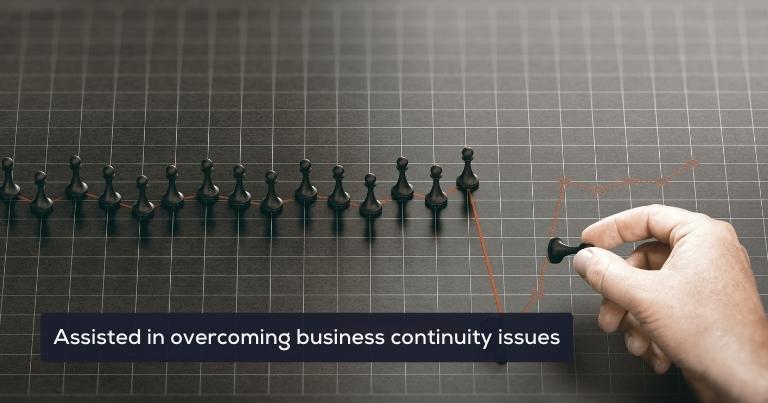According to a research paper issued by McKinsey and Company in 2021, the responses to COVID-19 have accelerated the adoption of digital technology by several years, and many of these developments may be here to stay. According to the firm, digitization of customer and supply-chain interactions and internal activities has been advanced by three to four years. Since COVID, financing for digital initiatives has expanded more than any other metric, outpacing increases in costs, the number of employees working in technology, and the number of customers.
This is supported by Accenture’s 2021 research report, “Make the leap, take the lead.” According to the report, COVID has helped leading organizations transform themselves by investing heavily in digital technologies. The research introduces a category of companies called Leapfroggers. They are the companies that were able to quickly implement advanced technologies and expand them across their organizations while also fostering the necessary organizational change to take advantage of these technological investments. Leapfroggers were able to grow revenue at 4X the rate of the companies lagging by expediting a company-wide digital transformation.
At this point, let’s understand a key terminology: Leapfrogging in the digital realm. What is digital leapfrogging, and how does it work?
Leapfrogging refers to taking advantage of the lack of existing infrastructure to implement the most advanced technologies. Over the previous few decades, this has shown to be a highly effective strategy for developing countries. The primary concept behind leapfrogging is that minor, incremental improvements help a dominating firm stay ahead of the competition. Let’s have a look at how COVID has aided in the digital leapfrogging:
Hailed a new industrial revolution:

The impact of the Coronavirus on our societies has accelerated digital leapfrogging on a scale no one could have foreseen, heralding a new industrial revolution. Since COVID, organizations have seen a dramatic and widespread acceleration in technology adoption. Businesses are taking a microscopic look at their customers’ and employees’ wants and preferences, and accelerating investment in technologies that solve specific problems and genuinely make a difference, which seems like a new industrial revolution.
Assisted in overcoming business continuity issues:

Several firms had business continuity issues during the epidemic. As a result, they speeded up their digital transformation and increased their investment. The major strategic problem in many organizations was regarding protecting their employees’ health and safety. 35% of businesses identified adjusting their business to the new reality and responding to client requests as their top challenges during this time. These businesses were able to overcome these obstacles by implementing digital technologies.
Increased investment in technology to handle specific issues:

According to a survey conducted by data platform Techradar during COVID-19’s peak time, businesses invested in technology and software to help them solve problems, improve processes, and react to changing market conditions. The study claimed that retailers were particularly quick to embrace digital transformation. To improve their productivity, 70% of the retail businesses polled invested in analytical reporting tools.
Let’s take a look at a few case studies that throw light on how COVID has enabled digital leapfrogging:
CASE STUDY 1
During the pandemic, a well-known healthcare chain experienced an unexpected setback. The lack of mobility hampered the necessary teamwork for medical check-ups. The hospital felt compelled to use digital technology and resources to meet this pressing demand. It enabled goal-driven collaboration among doctors, cross-organizational information sharing, and improved operational performance.
CASE STUDY 2
A campaign was run for one of the country’s most well-known footwear and accessory firms. Making this brand’s website compliant with Google’s algorithm and guidelines and raising the brand’s Google rating was the first step towards digital transformation. The brand saw a five-fold increase in traffic through this channel, with a nearly 20-fold increase in return on ad spending via organic search.
Conclusion
Like these case studies show, COVID-19 has expedited digital transformation in many ways. The Accenture study earlier quoted also suggests that the minimum requisite level of IT systems strength must be above the 30th percentile to stay ahead of peers. Hence going digital is the way forward for businesses, and COVID-19 has played a crucial factor in skyrocketing its pace.
Looking for expert technology consulting services? Contact us today.





